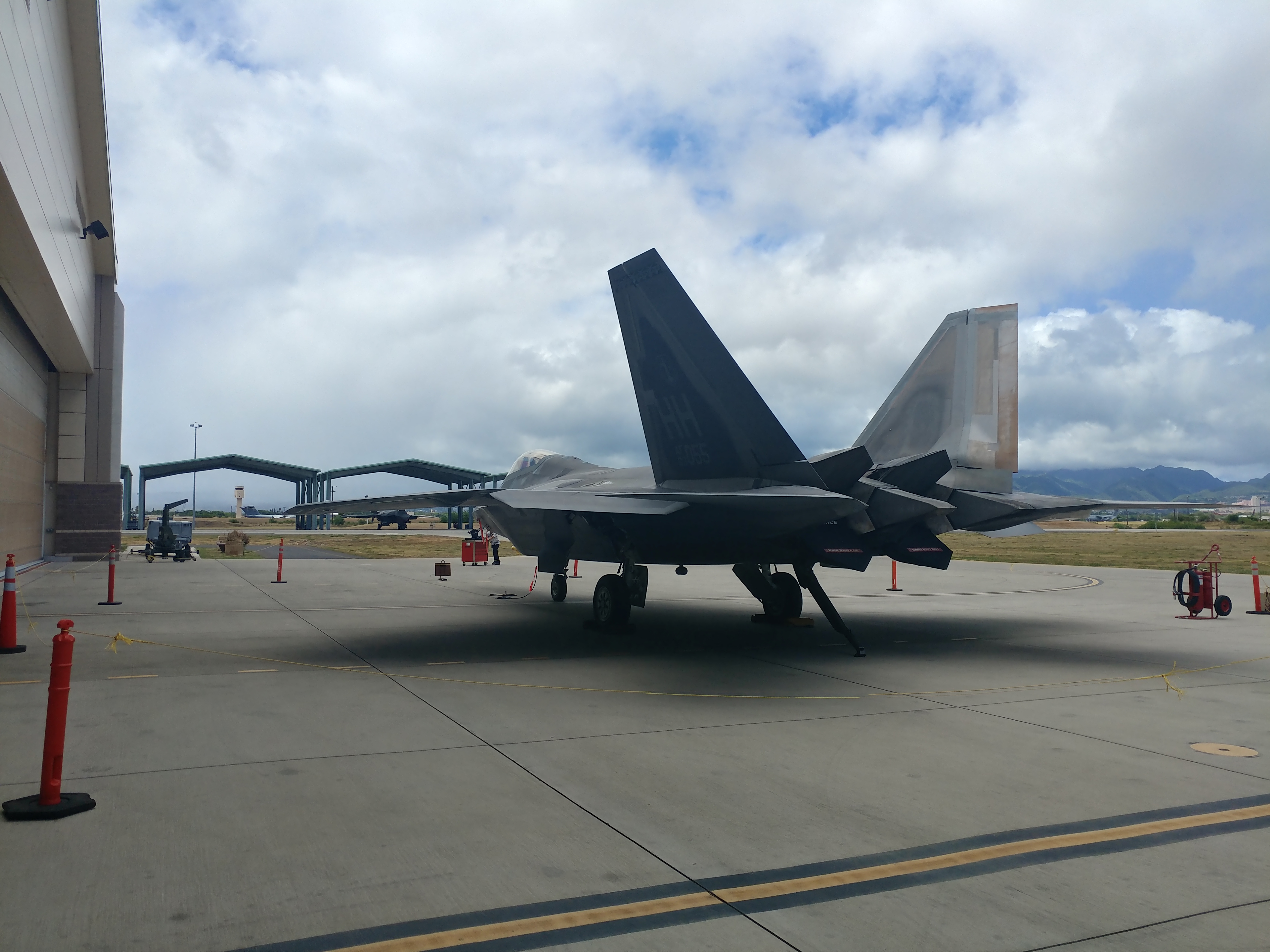
An F-22 ?from the 199th Fighter Squadron at JB Pearl Harbor-Hickam, Hawaii, sits outside a hangar at the base in June. Staff photo by Brian Everstine
The Air Force will explore alternatives to using F-22s to stand alert for homeland defense, and possibly change Raptor squadron organizational structures following a Government Accountability Office report that found the current status of the aircraft limits their effectiveness and readiness.
The GAO, in a report released publicly Thursday, recommends the Air Force reassess its F-22 structure to find other ways to more effectively organize and increase Raptor training opportunities, as the need for more high-end air superiority readiness is required.
“Air Force’s organization of its small F-22 fleet has not maximized the availability of these 186 aircraft,” the GAO report states. “Availability is constrained by maintenance challenges and unit organization.”
The report states F-22 pilots are not meeting their minimum yearly training requirements for air superiority missions, and the use of F-22s for exercises and partnership-building deployments take away from the pilots’ ability to train. For example, Raptor pilots who deploy for partnership building exercises will not fly the aircraft the way they would in combat because of security concerns regarding the F-22’s unique stealth capabilities.
Additionally, F-22s stand alert for homeland security missions in both Alaska and Hawaii since USAF does not have other fighter aircraft in these locations. This alert mission takes aircraft and pilots away from being available for any other purpose. Additionally, an F-22 pilot in Hawaii told Air Force Magazine in a recent interview the squadron at Hickam is limited by the amount of red air it has available for high-end training.
The Pentagon agreed with the GAO’s assessments, and said in response the Air Force is both looking at possibly changing organization structures to address the issue, and even looking at possibly using other aircraft for homeland alert missions in Alaska and Hawaii.